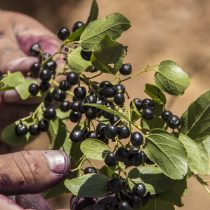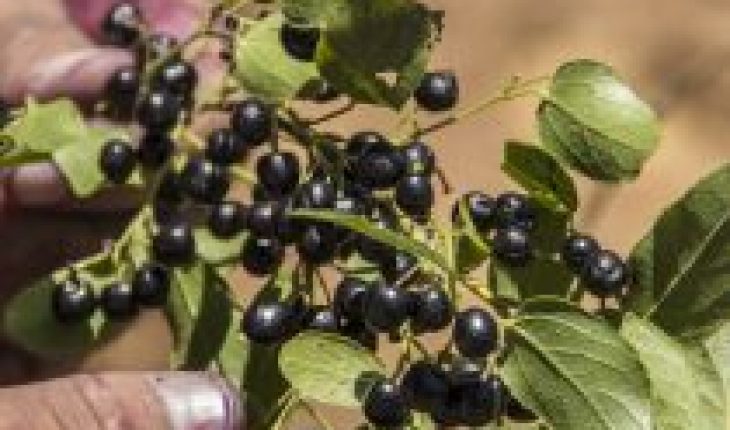
Maqui has always been considered a food of use in the Mapuche tradition that is usually harvested from wild plants in areas further south of the country. To date, there are 27 hectares planted throughout the territory.
But climate change will most likely lead to more drought, creating a direct problem for some of the country’s crops. That is why a study by the University of Concepción, showed that the maqui that is produced in the downtown area, specifically in Valparaiso, is one of the fruits that despite the adverse conditions of water and soil is able to better resist water stress.
Resistance to water stress was assessed by characterizing its reaction norm. First we studied the germination of the seeds in different water potential and second, according to the survival of the seedlings in nursery to different conditions of water stress. The content of antioxidant molecules in the fruits was evaluated by determining the total content of phenolic compounds, the content of anthocyanine and antioxidant activity.
Specifically, says the academic of the Department of Botany of the University of Concepción, Pablo Guerrero, was carried out “from the region of Coquimbo to Aysén, a survey of the wild populations of maqui evaluating the genetic divergence, resistance to drought and antioxidant capacity of the fruits to contribute with basic information for the design of a sustainable productive system in a scenario of global climate change. These plants can have resilience times of severe droughts, having a local adaptation and without the need to look for another territory”.
Alternative for the fruit industry
The study, which lasted three years, looked at the origin of the maqui in 15 sectors corresponding to the regions of Coquimbo, Valparaiso, Metropolitana, Maule, Biobío, La Araucanía, Los Ríos, Los Lagos and Aysén.
Of this evaluation, guerrero details, the Estero San Francisco, San Felipe; Las Animas ravage, Maipo drawer; Rincón de Buyeruca, Vichuquén; and the Pejerrey sector, Linares, are the four most resistant sources to water stress.
“In coarse terms, San Felipe (Valparaiso region) suffers physiological inactivation with half the water in the soil than other populations (much more resistant). While the one in Valdivia is inactive with twice as much water in the ground,” says Guerrero.
The results of the FIA project executed by the University of Concepción allow progress in the search for candidates for maqui cultivars to incorporate into the fruit industry, concluding that it can be carried out in the environments of the producers, without having to look further afield.
In addition, it collaborates with domestication because it includes distribution models, genotyping and variables of commercial interest to lay the scientific foundations for the incorporation of wild species into commercial cultivars.
In this line, the executive director of FIA, Álvaro Eyzaguirre, said that “the maqui being a wild plant, it is difficult to predict its behavior. Reason that gives greater value to the research that allows to respond in a better way to the growing national and international market that demands greater quality, safety and safety in the food. On the other hand, according to Odepa, 4 years ago there was only 1 hectare of maqui and to date, there are already 27 active hectares in production; this means that we are facing a phenomenon of interest on the part of producers to enter into the cultivation of fruits that stand out for their high nutritional content and that can also adapt to different climate and soil conditions”, executive director of FIA, Álvaro Eyzaguirre.
Methodology and other results
In addition to the fact that northern plants have better drought resistance, there are also two more outcomes. The first is that all maqui populations showed a strong antioxidant activity; and secondly, the pattern of genetic composition of the populations shows to have accumulated unique genetic diversity that must necessarily be safeguarded for the development of the fruit.
As for the second result, Guerrero commented that maqui fruits have a high antioxidant power, although this capacity did not vary mostly among most populations, “some localities such as Cajón del Maipo, Collipulli and Los Lagos showed a tendency to have greater antioxidant activity.”
It is important to emphasize that the content of molecules in the fruits and the antioxidant activity was evaluated by measuring the total phenolic compounds and anthocynine content.




